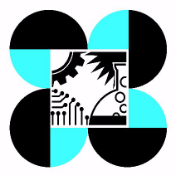About the Titan Project
The Philippine National Capital Region's air pollution level is 70% higher than what is considered safe by the World Health Organization.
According to Land Transportation Office in 2011-2013 there were 7 million registered motor vehicles and had been increasing every year since. As cities get more urbanized, resources come to fore. Philippine National Capital Region air pollution level are 70% higher than what is considered safe by the World Health Organization. Of which is caused by the increasing number of vehicles in the region. Vehicle Monitoring (TITAN) aims to develop an automated computer vision capable of tracking, classifying, and counting vehicles, profiling speeds, and estimating air pollution level based on vehicular counts. TITAN could be used for aid in traffic management, road infrastructure improvement, and help on the interest of Clean Air act of 2009, Republic Act 8749 Section 6. To achieve its goal the traffic analysis algorithm can be summarized into five steps: (1) Moving object segmentation, (2) Vehicle detection and tracking, (3) Vehicle classification and counting, (4) Vehicle speed estimation, and (5) Air quality estimation. Background Subtraction and several Point Processing algorithms are used for moving object segmentation. A multiple object tracking algorithm was developed. Vehicle Occlusion Handling for Traffic Monitoring (VSION) project uses Deep Convolutional Neural Network was used for vehicle classification and counting. Challenge of vehicle occlusion was addressed via K-means Clustering in Hue Saturation Value color space for distinct, different colored cars, occlusion scenario. Sliding Window approach was used for indistinct, similarly colored cars, occlusion scenario. The project Automatic Calibration and Speed Estimation on Multi Directional Vehicle Flow uses two vanishing points for addressing problems presented by the camera perspective. Using Cascaded Hough Transform for detecting the first vanishing point. A novel approach using Multiple Regression Fit was used for detecting the second vanishing point. Bounding boxes of detected vehicles are used to determine the width and height of the road. Project Roadside Air Quality Estimation System Using Vehicular Traffic and Meteorological Conditions used Statistical Machine Learning techniques for adjustment and calibration of air quality estimation model for approximating air pollutant levels. Web-Based Vehicle Classification and Counter Using Computer Vision (TraVis) was studied for the development of a web based interface for viewing generated data. Another interface was developed for managing the complete TITAN system. The TITAN system was tested to generate traffic data from public Internet Protocol Cameras and the results were compared to that of human encoder counting with positive correlation on the results comparison.
The Titan Project is Funded by the Following Organizations
 De La Salle University
De La Salle University Department of Science and Technology: Philippine Council for Industry, Endergy, and Emerging Technology Research and Development
Department of Science and Technology: Philippine Council for Industry, Endergy, and Emerging Technology Research and Development
